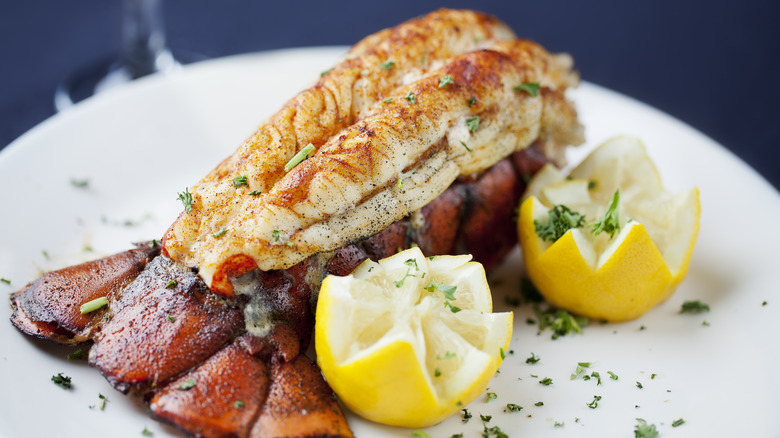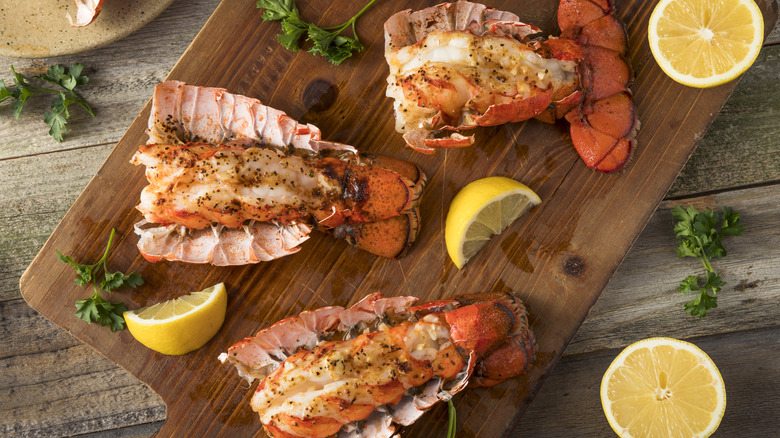The Flavorful Reason It Pays To Butterfly Lobster Tails
When in doubt over how to prepare a lobster tail, butterfly it. A stunning way to present the crustacean, the technique allows for the most visually pleasing result. What's more, it also serves a very functional purpose — it allows for an especially delicious, ultra-decadent, and full-of-flavor serving of lobster. Why, then, settle for anything less?
At its core, butterflying is a process where a protein is sliced almost fully in half, before being flattened. Although this method of preparation might seem like a lot of work without much of a payoff, that actually couldn't be further from the truth. Butterflying ingredients such as a lobster tail is a great way to expose more of the otherwise modest quantity of meat. By drawing it up and out of the shell, this increases surface area, providing an opportunity to more easily amp up flavor.
This technique can also make for more simplified eating. Rather than wrestle with the shell, the act of separating the meat has already been done for you. Plus, you can also thank butterflying for more succulent seafood as it can help the lobster to cook more evenly. The bottom line is this, a butterflied lobster tail will rarely disappoint.
Butterfly lobster like a pro with these tips
The trick to butterflying lobster is not to overthink things. Start by placing the tail shell-side up on a cutting board. Then, holding the tail in place, use kitchen shears to cut through the top layer. Continue cutting down the base, stopping just shy of the fin. Next, spread the shell open, before gently pulling out the meat and layering it over top of the shell — be sure to keep a small portion attached near the fin. Finally, squeeze the shells together to prevent the meat from falling back in, and finish by scoring the center of the flesh to encourage curling over the shell.
Once you've successfully executed the technique, the next thing to consider is how to season the meat. Depending on the method, it can be wise to season beforehand if grilling or baking. Alternatively, if you're boiling tails, dressing the lobster after it's cooked is best.
As for which ingredients and seasonings to use, melted butter is never a bad idea. While you could simply brush some over top of the tails and sprinkle on herbs like parsley or chives, you could also use a flavorful compound butter. Experiment with varieties infused with ingredients like roasted garlic, peppery chili powder, or vibrant lemon zest to really excite the tastebuds.
With lobster tails butterflied, seasoned, and cooked to perfection, the only thing left to do is pour yourself a glass of bubbly and dig in.

